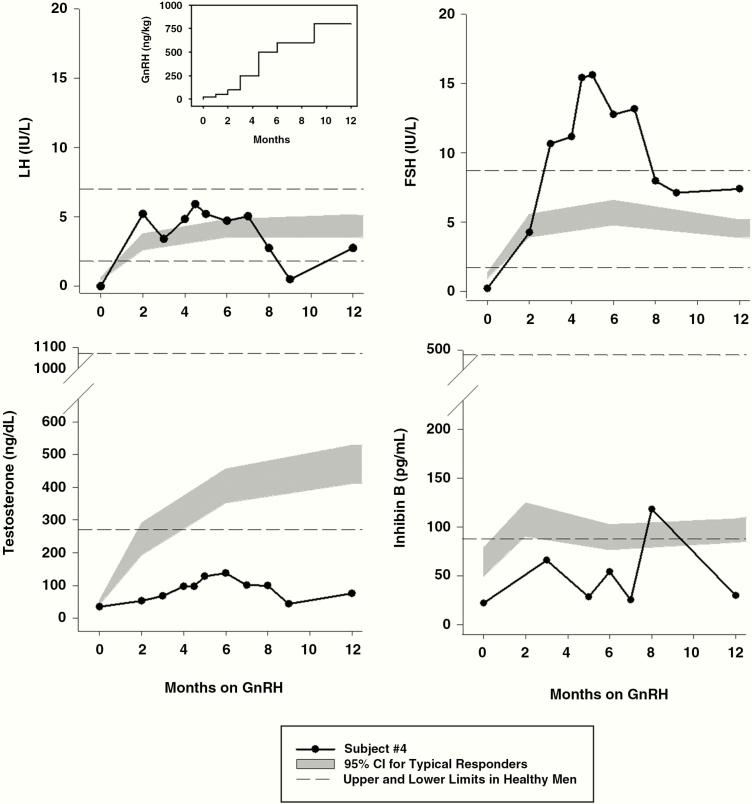Figure 3.
Hormonal responses to long-term gonadotropin-releasing hormone (GnRH) administration in a male arhinia patient (No. 4). GnRH was initially administered at a physiological dose (25 ng/kg/bolus subcutaneously) but was increased to pharmacologic doses as high as 800 ng/kg/bolus over the course of 1 year (see inset, upper left) in an attempt to overcome testicular resistance as manifested by hypergonadotropism with low testosterone and inhibin B levels. The patient’s data points are indicated by black circles and black lines. Horizontal dashed lines indicate the upper and lower limits of hormone levels in healthy adult men (41). The gray shaded area denotes the 95% CI of hormone levels in patients with congenital GnRH deficiency who responded in a typical fashion to GnRH with normalization of luteinizing hormone, follicle-stimulating hormone, and testosterone levels accompanied by mature sperm production (29). To convert testosterone (ng/dL) to nmol/L, multiply by 0.0347. To convert inhibin B (pg/mL) to ng/L, multiply by 1.0.

